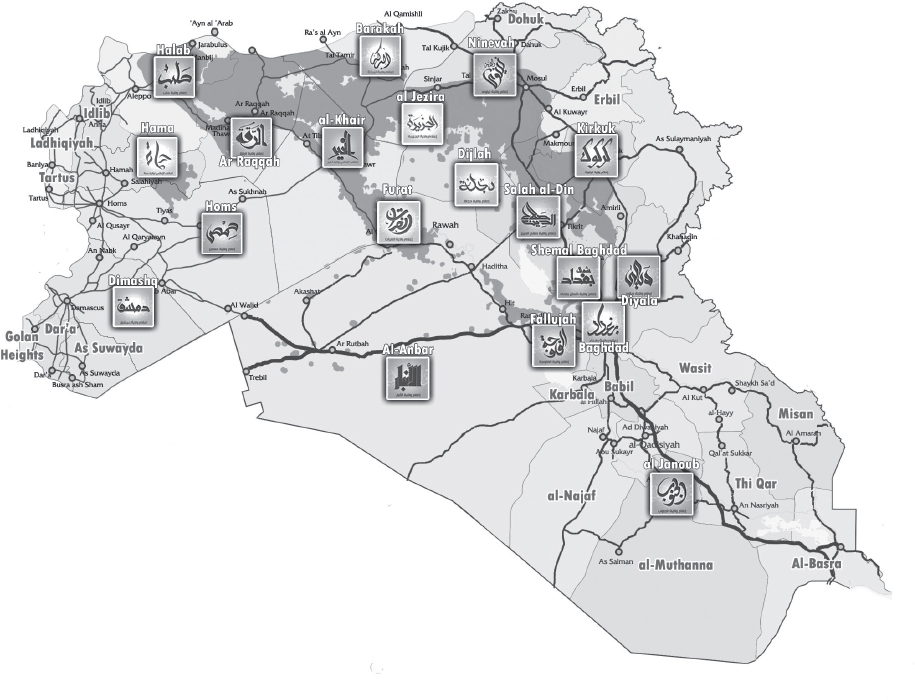
THE CALIPHATE ORGANIZATIONAL STRUCTURE

CALIPH
Caliph Ibrahim al-Qureyshi (Abu Bakr al-Baghdadi)
DEPUTY POSITIONS
Deputy/Emir of Syria
Abu Ali al-Anbari (KIA December 12, 2015)
Deputy/Emir of Iraq
Abu Muslim al-Turkmani. Real name: Fadil Ahmad Abdallah al-Hayyali (KIA August 18, 2015)
CABINET-LEVEL COUNCILS
Financial Council
Muafaq Mustafa Mohammed al-Khamoush (KIA)
Leadership Council
Abu Muslim al-Afari al-Turkmani
Military Council
Walid Mohammed al-Alwani, a.k.a. Abu Ahmad al-Alwani
Deputy to Alwani: Omar al-Shishani187
Feres Reif al-Naima (Chief of Logistics and Supplies)188
Abdul Rahman al-Afari (Oversees Martyr’s families)189
Khairy Abed Mahmoud al-Taey a.k.a. Abu Kifah (Supervises IED deployment)190
Abdullah Ahmed al-Mashhadani (Supplies Foreign Fighters)191
Previous Heads of Military Council:
Adnan Latif Hamid al-Sweidawi (KIA November 7, 2014 in Mosul)
Adnan Ismail Najm al-Bilawai al-Dulaimi a.k.a. Abu Abdulrahman al-Bilawi (KIA June 4, 2014 in Mosul)
Abu Mohammed al-Ani
Internal Security
Abu Ali al-Anbari (possible KIA)
Intelligence
Unknown
Media Council
Abu al Athir Amr al Absi
SHURA COUNCIL
Abu Arkan al-Amiri (Head of Shura Council)
Abu Muslim al-Afari al-Turkmani
Abu Ali al-Anbari
Omar al-Shishani
Abu Ayman al-Iraqi
Abu al-Athir Amr al-Absi
Abu Muhammad al-Adnani
Border
Ridwan Taleh Hussein Ismail Hamduni (Abu Jarnas)
Other ISIS Leaders
Wahib Shaker al-Fahdawi (Abu Wahib)
Lafadarim Mohaskari (Abu Abdullah al-Kosovi)
Abu Khutab al-Kurdi (Led Kobani campaign)
Abu Hazifa al-Yamani
Abu Omar (the boxer)
Ahmed Abu Samra (American-Syrian)
Turki al-Banali (Abu Himam al-Athari), referred to as Emir of North Africa in some reports
Bashar Ismail al-Hamdani (Abu Mohammed)—prisoner control
Abdul Wahed Khudair Ahmed (Abu Luay)—general security official
Mohammed Hamid al-Dulaimi (Abu Hajer al-Assafi)—mail official
Auf Abdul Rahman al-Afawi (Abu Saja)
Ahmed Abousamra (Media Center Work)
THE SYRIAN COMMAND
DEPUTY/EMIR OF SYRIA
Abu Ali al-Anbari (KIA-December 12, 2015)
ALEPPO (HALAB)
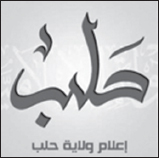
Governate Overview
Aleppo (Halab) is the most populous region in Syria, located in the semi-arid Aleppo Plateau with 10 districts, 32 towns, 1430 villages. The district borders Turkey along key entry points such as Gaziantep. The main cities are Aleppo, Manbij, As Safirah, Al-Bab, Ayn Al-Arab, Afrin, A’zaz, Dayr Hafir, Jarabulus and Atarib. Population: 4.9 million.
Organization
Wali: Omar Al-Absi a.k.a. Abu Atheer al-Absi (possibly removed)192
Army Leadership
Abu Osama al-Tunisi
Additional Commanders
Hassan Aboud al-Sarmini
Estimated Fighter Count
4,000193
Campaigns/Battles
Battle of Aleppo 2012–Present: The battle of Aleppo, also known as the “mother of battles,” began on July 19, 2012 and is still ongoing. The al-Nusra Front have about two thousand194 of the estimated 6–15 thousand rebel fighters195 196 from a vast array of secular and not-so-secular groups, which are widely outnumbered by the other side: 28–30 thousand members of the pro-Assad Syrian forces accompanied by Hezbollah.197
As for the “outcome” of this seemingly unending conflict, it is impossible to say who has won or lost. At this point, the city and its surrounding area are held, variously, by the Syrian Army, the Kurds, and the opposition, while the immense “state within a state” that is now under the sway of ISIS is less than 15 km from the Old City. At the same time, control of some of the other parts of the city and its environs are often more or less in play.198
Other Battles
Kuweires Offensive—September 14, 2015–November 16, 2015: ISIS held the Kuweires Military Airbase for two years. The Syrian Arab Army fought to uproot ISIS control of Kuweires Airbase with cooperation from the National Defense Forces and the Al-Ba’ath Battalion. Additionally, the operation notably involved support from the Iranian Quds force and from Russian airstrikes.199
Siege of Kobane: September 13, 2014–March 15, 2015: ISIS started its offensive against Kobane on September 13, 2015 with a massive campaign to overwhelm the local forces. Using freshly captured tanks, they took twenty-one Kurdish villages in twenty-four hours. Within two more days they had a total of sixty villages under their control. Forty-five thousand people fled to Turkey. By late September, ISIS was within 10 km of Kobane and was shelling the city from the outskirts. 200 By early October, ISIS had control of 350 villages.201 On October 5, ISIS began to enter the city of Kobane with the capture of Mistanour Hill, and then on further into the streets of the south side of the city. On October 6, ISIS raised its flag in the southeastern area of the city.202 The gains made on October 6, were reversed by Kurdish forces the next day with help from American airstrikes. Over the coming days, however, ISIS would continue its push until it captured the headquarters of the Kurdish forces on October 10, 2014.203
Over six months, the People’s Protection Units (YPG) would battle with ISIS through the city until they pushed ISIS out of both the city of Kobane by January 26, 2015 and recaptured the villages by March 15, 2015. The YPG and allies lost 1,405 people. Up to two thousand ISIS mujahideen died, with eighteen tanks destroyed.

Province Overview
Cities: Al-Hasakah, Jaza, Kahtanieh, al-Maabadah, al-Mnajeer, Tel Baydar, Tel Erphan, Tel Hamees. The population is approximately 1.5 million.
Organization
Wali: Abu Osama al-Iraqi204
Army Leader
Top Commander may be Abdul Mohsen al-Zaghilani al-Taresh205
Fighter Count
6,000
Notable Leaders
Ahmed Alaqqal was emir over Tel Abiad and Hesba. He was beheaded in Suluk after ISIS found him to be a drug dealer. The Alaqqal family was key to establishing ISIS. Their family is very involved in ISIS with lots of members as senior leaders. Hadi Alaqqal is a founder of al-Nusra Front.206
Campaigns
The Battle of Ras al-Ayn, November 8, 2012207–July 17, 2013208: The Syrian army left the city of thirty thousand inhabitants209 in mid-November 2012 and an armed conflict broke out between the Kurds of the YPG and rebel forces.210
At one point in the battle, around two hundred fighters from the al-Nusra Front and one hundred fighters from an FSA faction, Ghuraba al-Sham, some of whose members favor a secular state and some of whom are Islamist, faced off with around four hundred Kurdish combatants.211 After two earlier ceasefires,212 the second of which included the participation of the FSA,213 the third and final phase of the battle ended in July of 2013 with a victory for the Kurdish militia, and the division of the city into an eastern half and a western half: one under Arab control and the other under Kurdish control, as well as the expulsion of the jihadis from the city.214,215 This eventual division of the city occurred in spite of an attempt on the part of Kurdish PYD to foster unity in January of 2013 by raising the FSA flag alongside the PYD flag at a plenary meeting of the Kurdish militia. This was somewhat surprising, since the fighters of the YPG militia had been known to kidnap or attack those who dared to raise the FSA colors in their territory.216
Battle of Markadah, March 21–31, 2014: In a direct attack on the al-Nusra front, ISIS laid siege to Markadahin in late March 2014. The ISIS fighters drove al-Nusra front into a local hospital and local Mt. Markadah. Eventually, ISIS fighters drove the remaining al-Nusra front fighters and Omar al-Faruq al-Turki was killed.217 The town seizure gives ISIS control over very important weapons and a route between al-Hasakah and Deir ez-Zor, or al-Mayadin.
DIMASHQ

Governorate Overview
Capital: Damascus. Population: 2,836,000. Located in the Southwestern part of Syria, Wilayat Dimashq borders Lebanon and Jordan.
Organization
Wali: Abu Ayyub al-Iraqi218
Fighter Count: around 1,500219
Campaigns/Battles
Yarmouk Camp: Yarmouk Camp was overtaken by ISIS in April 2015. After first attempting to overrun the camp, the ISIS fighters were repelled before they successfully overtook the camp on April 4, 2014.220 The fighting saw a clash between three different alliances, with ISIS and al-Nusra fighting against Aknaf Bait al-Maqdis, Free Syrian Army, and Jaysh al-Islam fighters and the alliance of Syrian Armed Forces, Palestine Liberation Army, Popular Front for the Liberation of Palestine (PFLP) and Fatah al-Intifada. Within days, the Palestine Liberation Army joined with their allies to attack ISIS. Despite a small advance against them, ISIS remained in control. Then came the attacks from Jaysh al-Islam on April 12. There were small and steady advances, but more important were the changes in alignments of the groups involved on both sides. The Aknaf Bait al-Maqdis cease to exist as the members joined the Syrian regime forces. Many members of al-Nusra Front left to join ISIS.221 Though ISIS retreated by late April, the fighting continued until by June 8, 2015, when ISIS was driven from the camp. The camp’s population is around 18,000 civilians. 222
GEZIRA
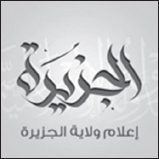
History-Province Overview
Wali: Unknown
Campaigns/Battles
HAMA

Wali: Unknown
Army Commandeder: Unknown
Battles
Major combat occurred in Hama, including the siege of the city by Syrian Arab Army forces in 2011 and three major offensives by the rebel forces in 2012–2014, led by the Free Syrian Army and an alliance including the Jebhat al-Nusra. At this juncture the JAN was no longer a branch of ISIS.
HOMS
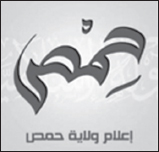
Organization
Wali: Abu Yehya al-Iraqi
Campaigns/Battles
Battle of Homs, May 2011–May 2014: the siege of Homs pitted the rebels against the SAA and its allies, among whom was Hezbollah.223 At some point after January 2012, the new ISIS-created al-Nusra Front224 225 226 227 would become one of the rebel forces active in the siege, using bombs or fighting alongside the FSA and the other rebels or on the periphery of the city.228 By May 8, 2014, Bashar al-Assad was able to lay claim to a major victory, after having succeeded in driving the rebels out of a city with a million citizens that had earlier been seen as the “cradle of the revolution.”229 In the two years before they were expelled, around two thousand rebels may have been killed.230 Some SAA soldiers went over to the rebel side, only to be routed after a long fight.
The sectarian and political violence that occurred during the siege of Homs was at times “exemplary.” For instance, on July 17, 2011, three supporters of the Assad regime were kidnapped and then dismembered, while the pieces of their bodies were then sent back to their families as a reminder.231 The Arab League, some of whose members were aiding the rebels, tried to intervene to little or no avail.232 For its part, the Assad regime was taken to task by Ban Ki-moon for torture and summary executions.233
Battle of Sadad, October 21-28, 2013: (Syrian Army Victory)
First Battle of the Shaer Gas Field, July 16–26, 2014
Battle of Arsal, August 2–7, 2014: The war spills into Lebanon (see chapter 4)
Battle of Mahin, October 31, 2015: On October 31, 2015, ISIS launched two VBIED attacks on the eastern side of Mahin, killing four from the National Defense Force and two from the Palestine Liberation Army. After the night attack the NDF and PLA forces retreated to Sadad. The NDF attempted to drive ISIS from Mahin early in November but failed.234 On November 23, 2015, SSNP, NDF from Sadad, Desert Hawks Brigade, and Gozarto Protection Forces joined together to uproot ISIS from Mahin. 235
Battle of Al-Qaryatayn, August 5–10, 2015: Victory for ISIS. Al-Qaryatayn came under ISIS assault after successfully staying out of the civil war for four years. After years of successfully remaining engaged but neutral between government and rebel forces, ISIS began its advance to take over the town of forty thousand with suicide attacks on local checkpoints.236

Organization
Wali: Haji Abdul Nasser237
Army Leader: Ahmed al-Mohammed al-Obaid (Abu Dijana al-Zer)238
Fighting Force: around 9,000
Campaigns/Battles
Battle of Deir ez-Zor, July 2011–July 14, 2014: The Syrian Army arrived in July of 2011 in order to secure the city during what came to be known, nationwide, as the “Ramadan massacre.”239 The mêlée in Deir ez-Zor continued for many months and included a partial retreat by the SAA, defections from the army, the killing of SAA forces by defectors,240 a rebel attack on an army base in which twelve SAA infantry were killed,241 a car bomb that took the lives of nine people outside an SAA intelligence complex,242 and a cease-fire arranged by the U.N. By May of 2012 many towns and villages in Deir ez-Zor province were in the hands of the rebels,243 among whom was the al-Nusra Front.244 The clashes resumed, becoming more intense, with shelling by the SAA,245 along with advances and retreats, and the seizure of the key Siyasiyeh Bridge over the Euphrates by the rebels on January 29, 2013, thereby cutting off SAA supply lines to the province of Hasakah.246 On May 3, 2013, the Deir Ez-Zor suspension bridge was shelled by the FSA and destroyed. That left the Siyasiyeh Bridge as the only major link to the province of Hasakah (it too was blown up by the SAA in September 2014).247
The fighting as well as the stalemate at Deir ez-Zor continued with Assad’s forces retaining control of part of the city. ISIS executed its major offensive there from April 10–July 14, 2014 in order to vanquish the other rebel forces that were still active in the Deir-ez-Zor governate. It succeeded rather decisively. Among the National Coalition forces that ISIS routed was, ironically, the al-Nusra Front,248 of which ISIS had earlier been a part, along with the FSA and the Islamic Brigades.249 After three months of violent clashes, ISIS had gained hold of almost the entire Deir ez-Zor governorate, one of the largest in Syria.250 Around half of the city of Deir ez-Zor251 and the SAF airport remained in the hands of the SAA, which did not take part in the inter-rebel fighting.252 Heavy clashes then went on for months between the SAA and the Islamic State.
AR-RAQQA

Organization
Wali: Taha Subhi Falaha a.k.a. Abu Muhammad al-Adnani- ISIS Spokeman
Army Commander: Ali al-Hamoud a.k.a. Ali Moussa al-Shawakh253
Fighting Force: Around 11,000
Additional leaders in Raqqa:
Ali al-Hamoud, “Ali Moussa al-Shawakh”
Abdullah al-Shoukh
Todab al-Barij al-Abdul Hadi—Tribal issues
Abdul Rahman al-Sahu—Security
Abu Hamza al-Riyadiyat—Security
Abu Hassan al-Furati—Security
Campaigns/Battles
2014 Eastern Syria Offensive: July 23–August 28, 2014
Battle of al-Taqba Air Base: August 10–28, 2014
Seizure of Raqqa, 2013: There was an armed conflict outside the city of Raqqa that may have served as a prelude to the battle of Raqqa, which began on March 4, 2013.254 As the uprising began to spread across the landscape of Syria, twenty people, eight of them children and three women, were killed in late December 2012 in the village of Qahtaniya, not far from the city of Raqqa, when the village was shelled by Syrian army tanks. According to the Syrian Observatory for Human Rights, no al-Nusra fighters were in Qahtaniya at the time. The deaths of these twenty people had followed the earlier advance across the region of Syrian rebel forces.255
By early 2013, the rebels had taken over a lot of the northern part of country, but had failed to secure a single major city. They began to plan an attack on Raqqa.
The seven thousand rebel fighters during the battle were led by the al-Nusra Front, along with elements of the FSA and Ahrar al-Sham, the major Islamic rebel group in Syria at the time.256 The rebels approached the city from the north257 and took on the Syrian security forces in violent clashes around the city’s government offices. On March 4, 2013, when they seized the main square in the city, the police and border guards were seen leaving, without being harried in any way by the rebels. This occurred after Assad’s forces at the eastern gate of the city had already left and handed over the entire eastern district to the rebels without a fight. Raqqa, the first major city to be taken by the opposition, fell in only a few hours. Some of military and security officers who decided to fight to the end were killed and then mutilated.258 After a little shove by the rebels, the golden statue of Hafez, Bashar’s father fell onto the main square.259 More than three hundred members of the Ba’athist security forces were captured with nearly equal ease.260 A new tyranny would soon begin as the city was designated as the new capital of the “Islamic state.” The Syrian regime called in air strikes soon after the al-Nusra-led victory.261 262
THE IRAQ COMMAND
Deputy/Emir of Iraq:
Abu Muslim al-Turkmani. Real name: Fadil Ahmad Abdallah al-Hayyali (KIA August 18, 2015)
ANBAR
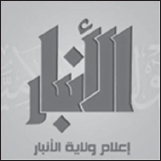
Province Overview
Anbar is the largest of the Iraqi wilayat. Its capital was Ramadi. Its estimated population was just above 1.5 million. It lies west of Fallujah and Haditha. It is overwhelmingly Sunni and the largest tribe is the Duliami. It is divided into seven districts.
Wali: Adnan Latif Hamid al-Sweidawi (KIA November 7, 2014 in Mosul)
Campaigns/Battles
Anbar Campaign, December 30, 2013–June 25, 2014: The Dulaimis had been holding demonstrations against the Maliki government following the arrest of a Sunni finance minister the year before. Protests had also spread to Ramadi, Samarra, Tikrit and beyond. Al-Qaim, Abu Ghraib are also seized.
Fall of Fallujah, December 30, 2013–January 4, 2014: For a year, protesters in Anbar had raised their voices in opposition to Maliki’s Shi’ite-dominated government. But after authorities arrested a prominent Sunni lawmaker, the tensions boiled over. On December 30, 2013, as many people in the area reacted in anger at the arrest, army patrols on the highway to Ramadi came under fire from militants. 263 Within two days ISIS gained more control over the town.
The Iraqi Army withdrew after fighting. A majority of police walked away from their posts. To compound that problem, one hundred inmates were freed from a local prison. By January 4, 2014, Iraqi security official in Anbar announced that Fallujah had fallen to ISIS control.264
Northern Iraq Offensive, Jun 5–25, 2014: ISIS captures Saqlawiya on June 15, 2014.
The Siege of Saqlawiya265, September 14–22, 2014: Camp Saqlawiya had been locked down after being surrounded by ISIS fighters for a week. The soldiers in the camp were hopeful for reinforcements when ISIS fighters arrived. Instead of help, ISIS hit them with two SVBIED attacks. The militants were dressed as soldiers according to survivors. The Humvees they were driving detonated along with three SPBIEDs. Those who survived the attack were rounded up and massacred. Between three hundred and five hundred soldiers were killed.266
The Battle of Ramadi, November 21, 2014–May 17, 2015: Though ISIS had partially controlled Ramadi before, the government held control over the city until late in the year, when ISIS announced its new Wilayat in Anbar. In November, ISIS launched a four-front assault on Ramadi using mortars, VBIEDs, and run-and-gun attacks that killed twenty soldiers.267 Fighting continued between ISIS fighters and government forces as ISIS sought to gain control of the government buildings. Repeatedly, local tribal forces and government forces would repel the attacks, which were heavy and sustained, for months.
By January 2015, Iraqi forces launched operations to “cleanse” the area of ISIS fighters. But on March 11, ISIS attacked again with car bombs and SPBIED attacks and again government forces kept them at bay. Despite the efforts of the government forces in April of 2015, it would be an attack on May 14, 2015, that would turn the tables. Using heavily armored bulldozers and ten SVBIEDs, they rammed the gates of the government complex and captured the police headquarters and the Ramadi Great Mosque. They then raised the ISIS flag on the provincial government building.268 By May 17, 2015, ISIS had complete control over Ramadi as Iraqi forces abandoned the city.269 In December 2015, ISIS would lose the city and hundreds of fighters to a re-energized Iraqi army.
Events
March 4, 2013: Akashat ambush—ISIS claims a cross border attack on Syrian soldiers and Iraqi guards.270
October 2, 2014: The town al-Hit in western Iraq falls to ISIS.271
Aug 27, 2015: ISIS deploys an SVBIED attack that kills General Abdel Rahman Abu Ragheef, deputy commander of operations for Anbar and Brig Safeen Abdel Majeed.272
BAGHDAD
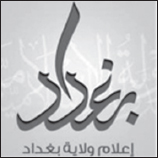
Organization
Wali: Ahmed Abdel Kader al-Jazaa (Abu Maysara)273
Battles
Aug 13, 2015: SVBIED attack kills 75 and injures 212.
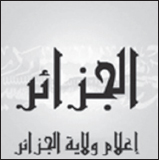
Organization
Wali: Unknown
DIYALA
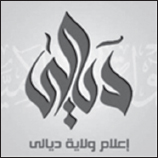
Province Overview
Diyala Governorate is in the northeast of Iraq along the Iranian border. There are six districts: Ba’quba, Al-Muqdadiya, Khanaqin, Al-Khalis, Kifri, and Balad Ruz. The population is estimated around 1.4 million.
Organization
Wali: Unknown
Campaigns
Northern Iraq Offensive (June 5–25, 2014)
June 15, 2014: ISIS takes control of Adhaim just north of Baghdad.
June 15, 2014: ISIS kills forty-four prisoners at Baqubah police station.
July 17, 2015: Khan Bani Saad bombing: 120–130 killed.
EUPHRATES

Organization
Wali: Ahmed Mohsen Khalf al-Juhaishi (Abu Fatima)
FALLUJAH

GEZIRA
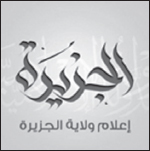
Wali: Aasi ali Nasser al-Obeidi (KIA: January 10, 2016)
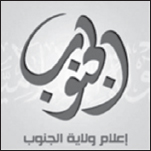
Province Overview
Located in the south of Iraq, Basra, Nasiryyah, Suq al-Shuyukh, Faw, Al-Jabasiyya, Al-Medina, al-Zubayr, al-Huwayr, Al-Hammar, Al-Islah, Al-Samahwah, Al- Shafi, Abu al-Khasib, Al-Harithah, and Zawb’a.
KIRKUK
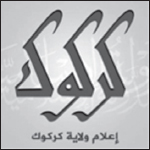
History-Province Overview
Located in the north of Iraq, Kirkuk has four districts, Al-Dibs, Daquq, Al-Hawijia, and Kirkuk. It has an estimated population of 1.4 million.
Wali: Ni’ma Abd Nayef al-Jabouri a.k.a. Abu Fatima al-Jaheishi274
Battles
Battle of Kirkuk: December 2014
Second battle of Kirkuk: January–February 2015
NINEVAH

Province Overview
Located on the northwestern border of Syria, Ninevah is a very diverse region with thirty districts, Mosul being the capital and most-populated district. The population is around 3.3 million.
Wali: Adnan Latif Hamed al-Suwaidawi a.k.a. Abu Mohannad (killed) replaced by unknown275
Campaigns/Battles
Northern Iraq Offensive, June 6, 2014
Battle of Mosul (“Battle of the Lion of God al-Bilawi”), June 5–25, 2014: Starting June 6, ISIS engages checkpoints on the west side of Mosul at 2:30 a.m. and advances into city. ISIS seized Mosul on Tuesday, June 10, by taking over the police stations, governor’s headquarters, airport, and military bases in the area. By the end of the day ISIS had raised its flag in town.276 They released more than a thousand prisoners whom the Iraqi government claimed were al-Qaeda or ISIS members.277
Jun 15, 2014: ISIS captures Tal Afar and local airbase.278
Aug 1-4, 2014: Battle of Zumar—ISIS vs Peshmerga
Mosul Dam, Aug 6–16, 2014: ISIS seized the Mosul Dam on August 7, 2014. The United States, Iraqi, and Kurdish forces fought to recapture the dam and a local town nearby. With a combination of US airstrikes and Kurdish ground assault on the surrounding fighters’ positions, three days later Iraqi and Kurdish forces announced the dam was no longer under ISIS control.279
The Sinjar Offensives: On August 3, 2014, ISIS began its campaign to seize Sinjar with an early morning raid.280 For the next several months it would maintain control over the area and force the Yazidi populace to flee the area or seek refuge in the Sinjar mountains. ISIS massacred between two thousand and five thousand Yazidis and twenty thousand were displaced. In late October 2014, ISIS launched an effort to control the area around Mount Sinjar, thus stranding Yazidis on the mountain top without an avenue of escape. Starting on December 17, 2014, Peshmerga forces with US airstrike support began the first of two campaigns to break the “siege” of Mount Sinjar. After breaking the siege, Peshmerga forces then went on to clear the local area of ISIS, forcing them back to Tal Afar or Mosul. Though the Peshmerga forces were able to take back Sinjar and other villages, they were not able to uproot ISIS from Tal Afar. Between November 12 and 14 2015, Peshmerga forces again returned to clear ISIS from the Sinjar area.
NORTH BAGHDAD

Province Overview
Created by ISIS, this area contains parts of Baghdad, Taji, Husseiniyya, Saba’ al-Bor, and Tagiyyat.
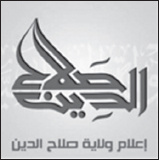
Province Overview
Samarra, Baiji, Tikrit, Hajjaj Village, Al-‘Awjah, Al-Dur, Al-Mukishiyyafah, Al-Ishaqi, Al-Duluwiyyah, Balad, Siniyyah
Wali: Wissam Abdul Zayd al-Zubaydi a.k.a. Abu Nabil al-Ansari281
Campaigns
Northern Iraq Offensive (June 5–25, 2014)
June 5, 2014: Samarra attacked as part of Northern Iraq Offensive.
June 11, 2014: Tikrit attacked as part of Northern Iraq Offensive. ISIS called this battle “Battle of the Lion of God al-Bilawi.” Tikrit falls to ISIS on June 11, 2014.282
Battles
June 11, 2014: ISIS attacks in Baiji.
June 11, 2014: ISIS kills over a thousand Iraqi Air Force members at Camp Speicher.283
Siege of Amirli, June 11, 2014: ISIS tries to lay siege to Amirli and is repelled by both militia forces and Iraqi government.284
The Camp Speicher Massacre, June 12, 2014: As military cadets were leaving their base to go on break see family, buses full of ISIS members pulled up and kidnapped them. They were taken to al-Qusour al-Re’asiya and nearly seventeen hundred were massacred. Photos and video released later shows the cadets by ISIS as they tied them up, and took them to be executed. Survivors told about playing dead and escaping after dark.285 ISIS attacked the air base late on July 17, 2014, using SPBIEDs and snipers. 286
First Battle of Tikrit, June 26–30, 2014: After ISIS had taken control of Tikrit, the Iraqi government launched an assault to remove ISIS from the city. In the first days, the Iraqi military engaged ISIS fighters around the University of Tikrit with helicopters and ground forces, including Iranian-trained militia members. Fighting lasted for four days until Iraqi forces retreated and left Tikrit in the hands of ISIS.
Second Battle of Tikrit: March 2–April 17, 2015
First Battle of Bajji, October 29–December 21, 2014: After ISIS captured large sections of northern Iraq in its June 2014 offensive, the Iraqi military with coalition assistance fought to drive ISIS out of the Baiji and the Baiji Oil Refinery. In the end, ISIS would remain in charge of Baiji.
Second Battle of Baiji, December 23, 2014: After the failure to drive ISIS from Baiji, Iraqi forces along with a coalition of local militias began a new campaign to drive ISIS from Baiji. The battles over the next several months would see an ebb and flow of ISIS control over Baiji, but ultimately the group held control. In April 2015, ISIS drew in hundreds of fighters from Syria to help hold the oil refinery.287
The battle for the refinery became a strategic objective for both ISIS and the government of Iraq. Thousands of Iraqi security forces and Shi’ite militiamen assaulted the facility for months. By May 2015, the Iraqis had ISIS out of the main complex. In September 2015, ISIS launched a fierce counterattack which partially displaced some Iraqi units. By January 2016, ISIS would finally be pushed out the contested ruins.